
A new-model Chinese space suit for testing. /CMG
A new-model Chinese space suit for testing. /CMG
As the Chinese astronauts, or taikonauts, ventured out from the Chinese space station for a spacewalk, the space suit they wore piqued the curiosity of many space tech fans in the country.
"The red stripes are so beautiful! I want to try it on!" a netizen commented under a Weibo post from The People's Daily.
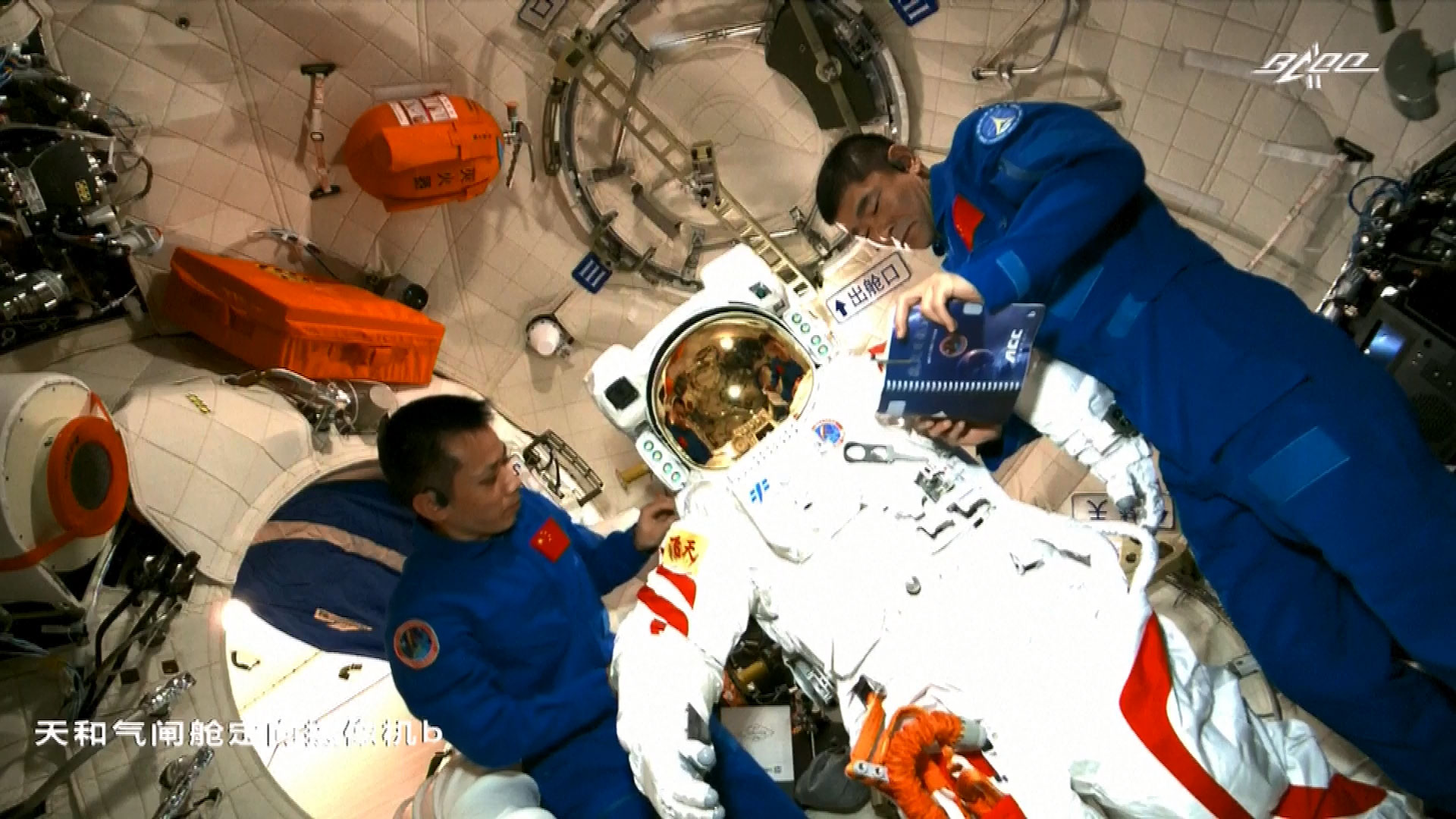
Taikonauts check a new-model space suit in the Chinese space station, June 23, 2021. /CFP
Taikonauts check a new-model space suit in the Chinese space station, June 23, 2021. /CFP
Many people would guess that the new suits were designed by people from nationally famous universities in Beijing or Shanghai. However, only a few die-hard fans will point out that engineers in south China's Hunan Province were involved in the industrial design of the suit.
Luo Jianping, an associate professor at Hunan University in the province's capital Changsha, is a key person behind the design.
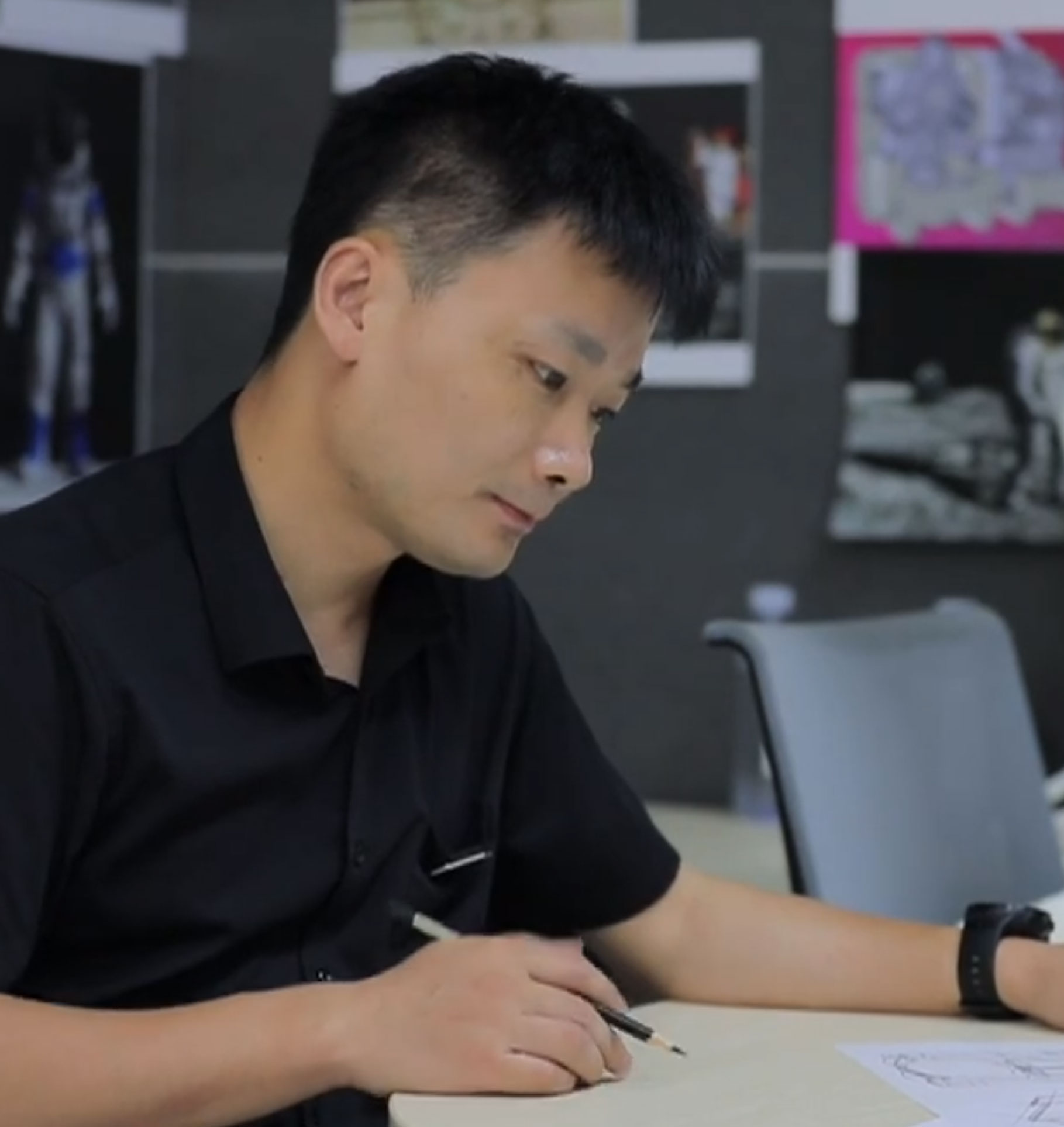
Luo Jianping works for Xiangtan University when he and his teammates takes part in the industrial design of the new space suit. /CMG
Luo Jianping works for Xiangtan University when he and his teammates takes part in the industrial design of the new space suit. /CMG
"The goal of space suit design is not limited to making it beautiful," Luo told China Media Group (CMG). "We also need to treat the whole suit as a system."
When the industrial designing team succeeded applying for the space suit project in late 2013, Luo was working at Xiangtan University in a city of the same name near Changsha.
"Our university may not be so famous," said Ma Qiucheng, head of the designing team and a professor at Xiangtan University. "But we are fortunate enough to grab the chance of showing off our industrial design."
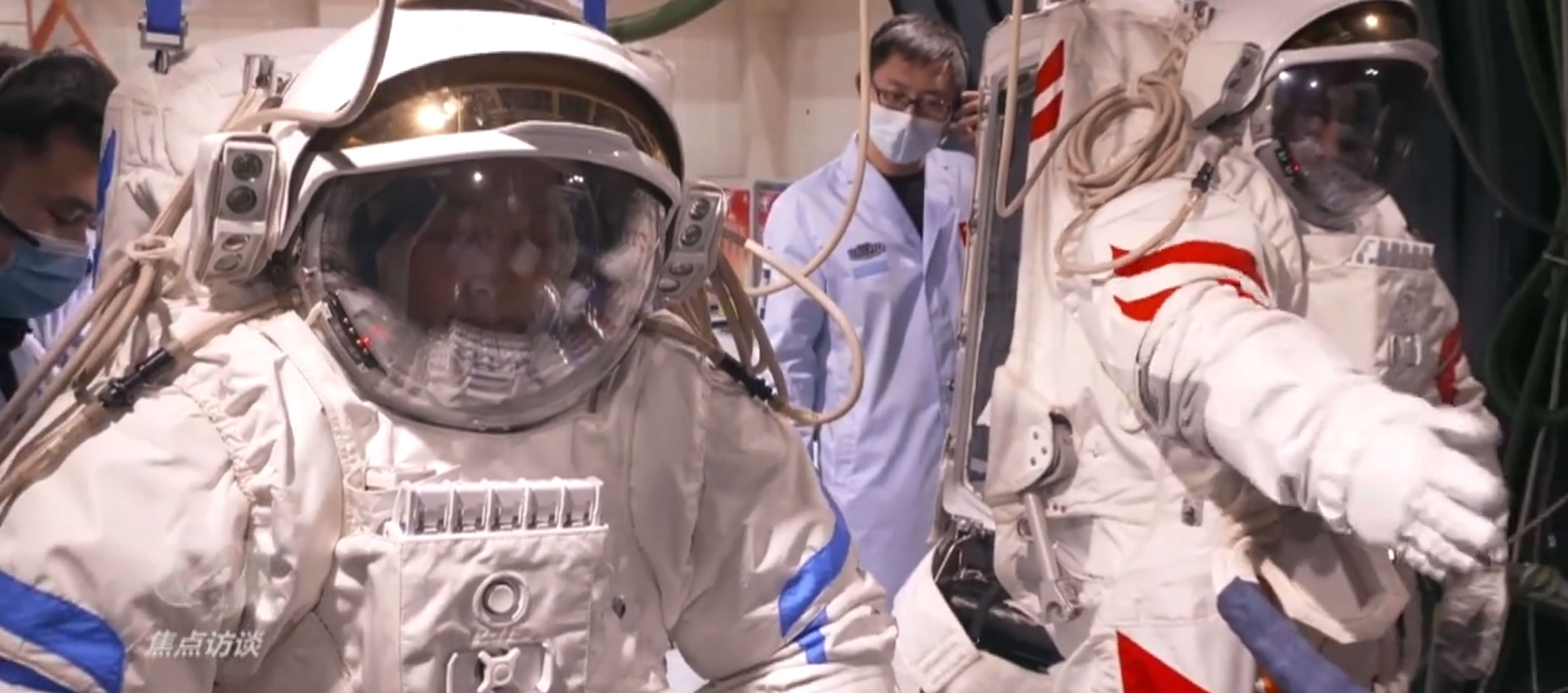
Engineers test the new-model space suits with red and blue stripes. /CMG
Engineers test the new-model space suits with red and blue stripes. /CMG
During the initial period of the design work, the progress was slow.
"Space suit is so different from our previous works," Luo said. "We worked under intense pressure and came out with the first candidate, which failed to meet the requirement of spacewalking."
After plenty of time was wasted, the team met with the taikonauts and found inspiration.
"We are not creating standalone accessories for the suit," Luo told CMG. "We have to make the decorations a part of it."
That's how the idea of red stripes cropped up.
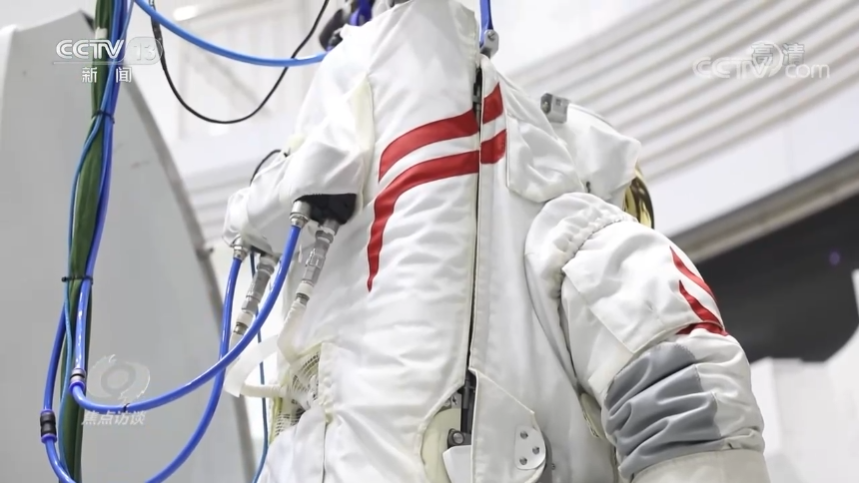
The red stripes around the arms of the new Chinese space suit. /CMG
The red stripes around the arms of the new Chinese space suit. /CMG
The stripes around the arms and legs of the space suit were first drawn by Hu Hongyan of Xiangtan University and adjusted by Luo to fit the suit.
They fit perfectly to the name of the suit: celestrials, which are mostly found in Buddhist culture.
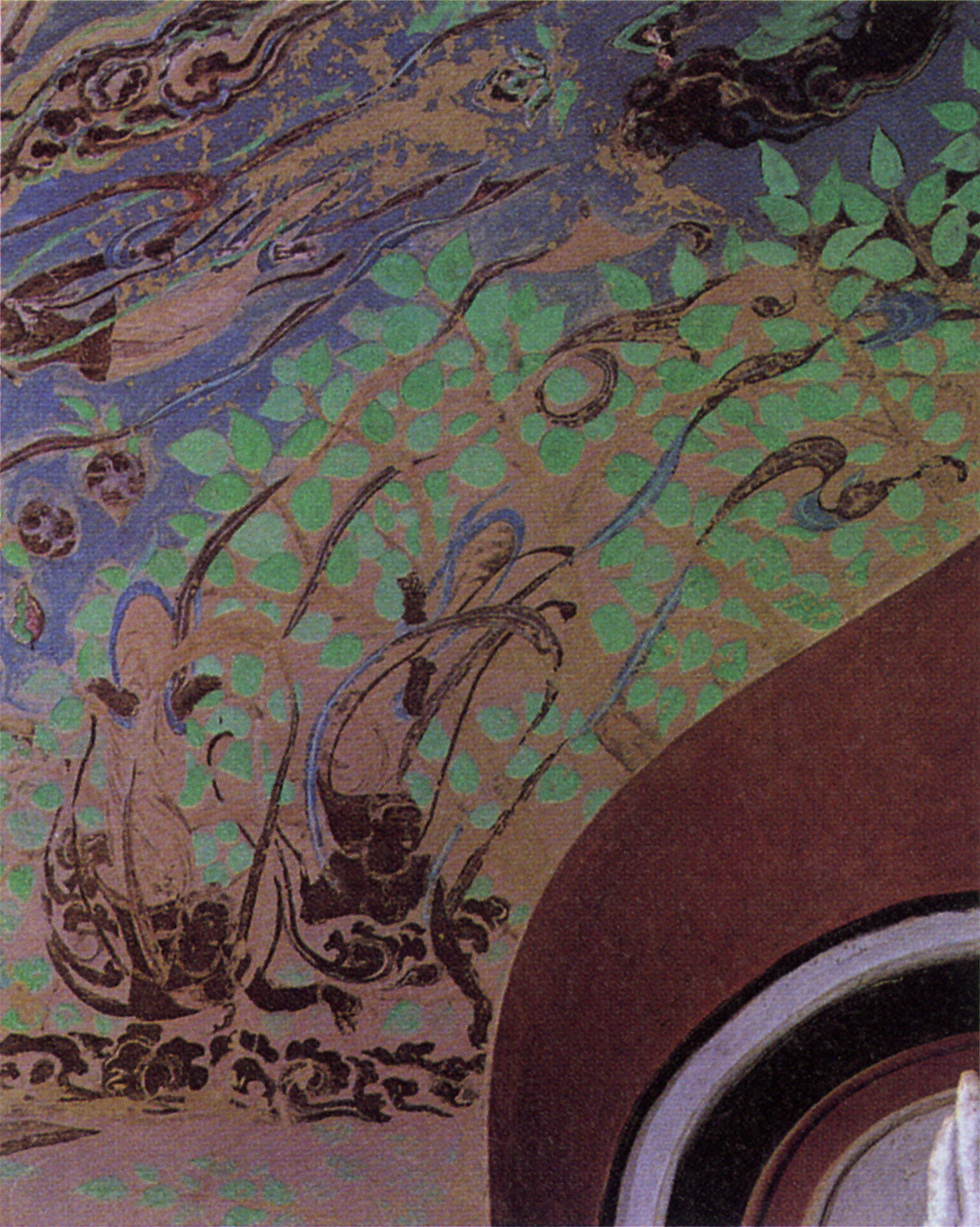
A segment of a mural in Dunhuang showing the celestrials, drawn during the Tang Dynasty (618-907). /CFP
A segment of a mural in Dunhuang showing the celestrials, drawn during the Tang Dynasty (618-907). /CFP
The concept became well-known in China through murals found in the Mogao Grottoes – a UNESCO World Heritage Site in northwest China's Dunhuang City.
Check out CGTN's travel guide to Dunhuang.
"The stripes are quite recognizable," the Changsha Sci-tech Information Research Center said in their WeChat official account. "They also made the suits look less bulky and more vibrant."
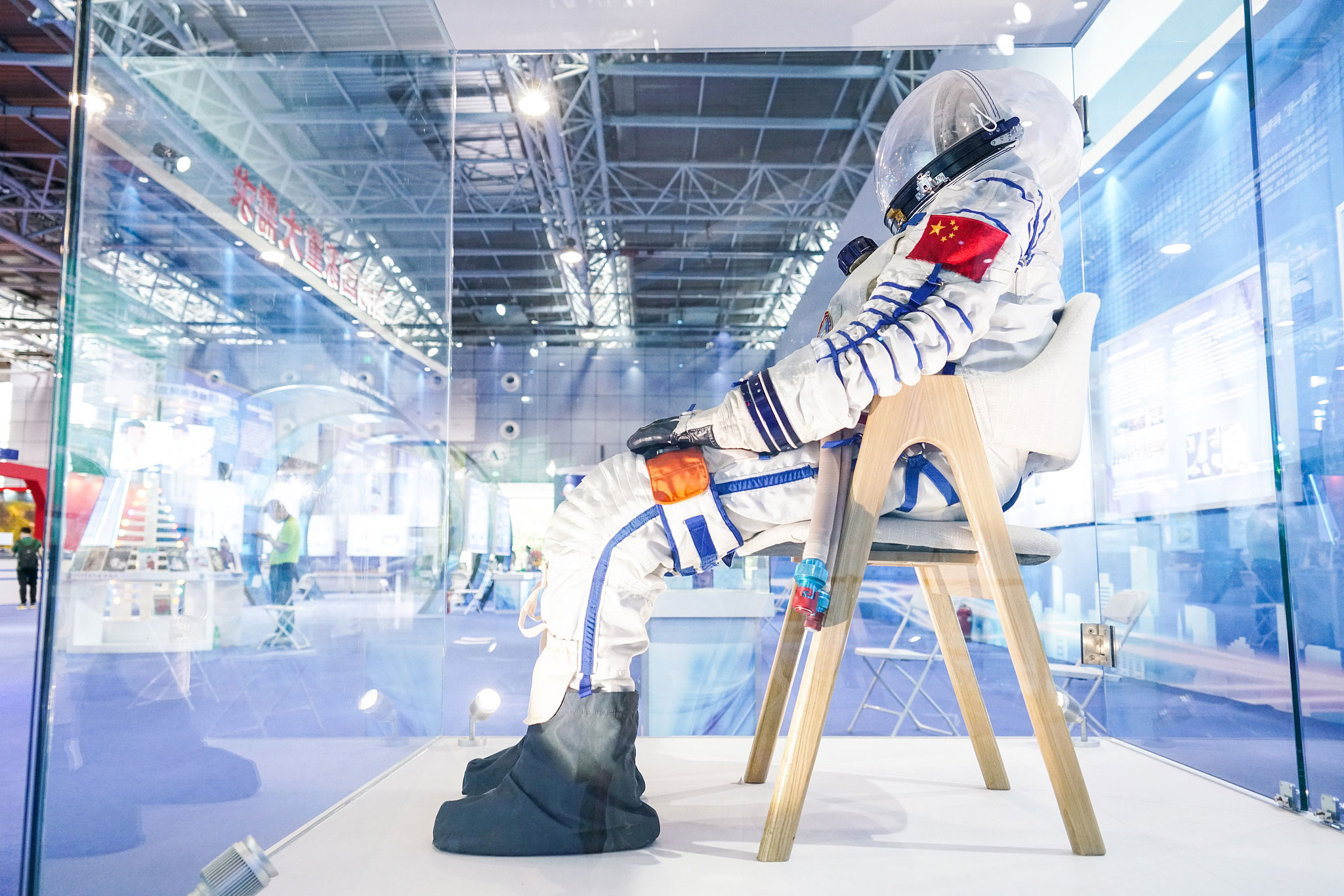
A Chinese space suit of a previous model displayed in Beijing, May 26, 2021. /CFP
A Chinese space suit of a previous model displayed in Beijing, May 26, 2021. /CFP
They added that there's only one size of the suit, which can automatically fit taikonauts of different heights and genders.
"I hope our design can act as a media between technology and aesthetics," Luo said. "And demonstrate the greatness of China's space adventure."
Check out more about the new Chinese space suit:
China Space Walk: Designers add more 'Chinese elements' to new space suit
Space log: About spacesuits for Chinese astronauts
Space log: How do China's spacesuits ensure taikonauts' safety?

